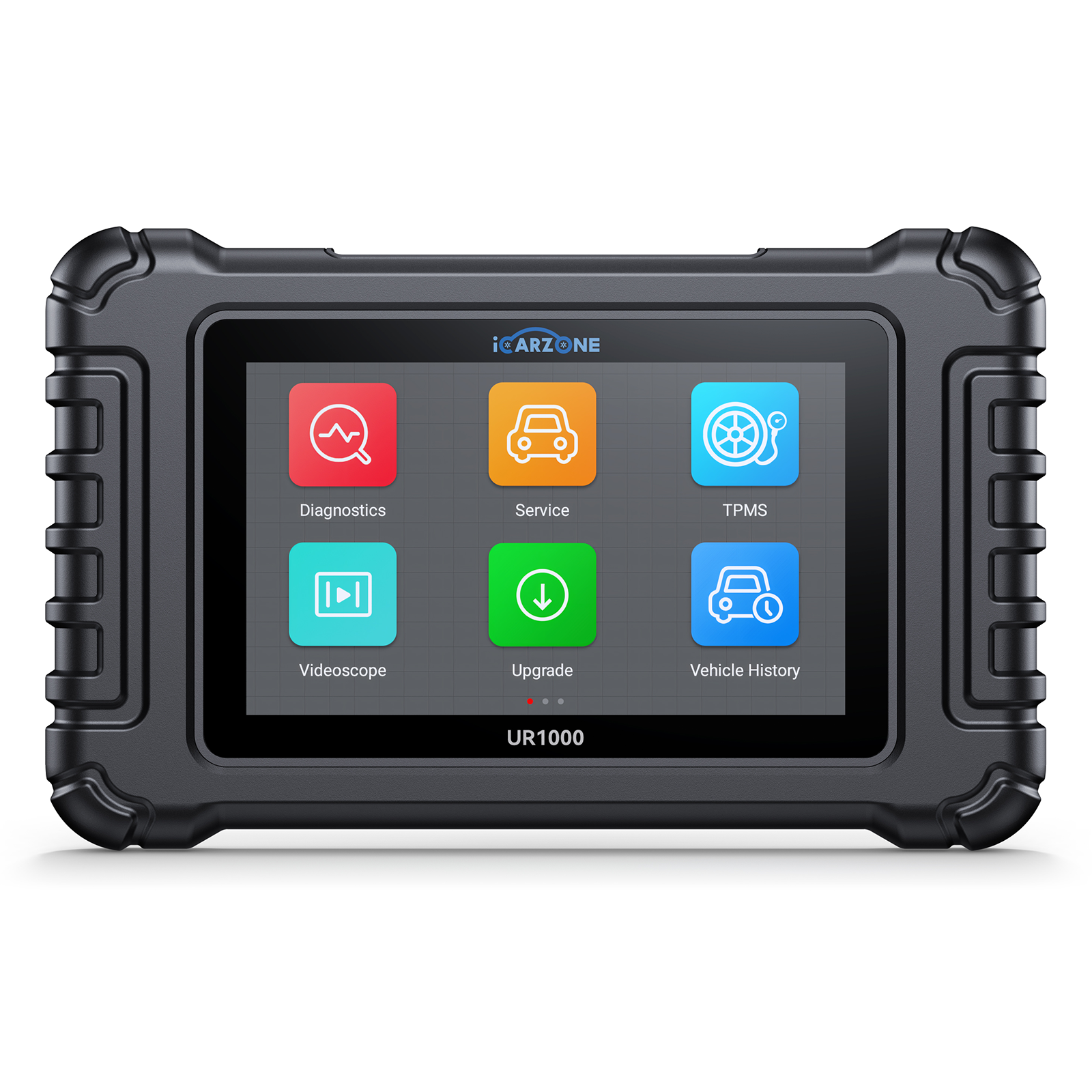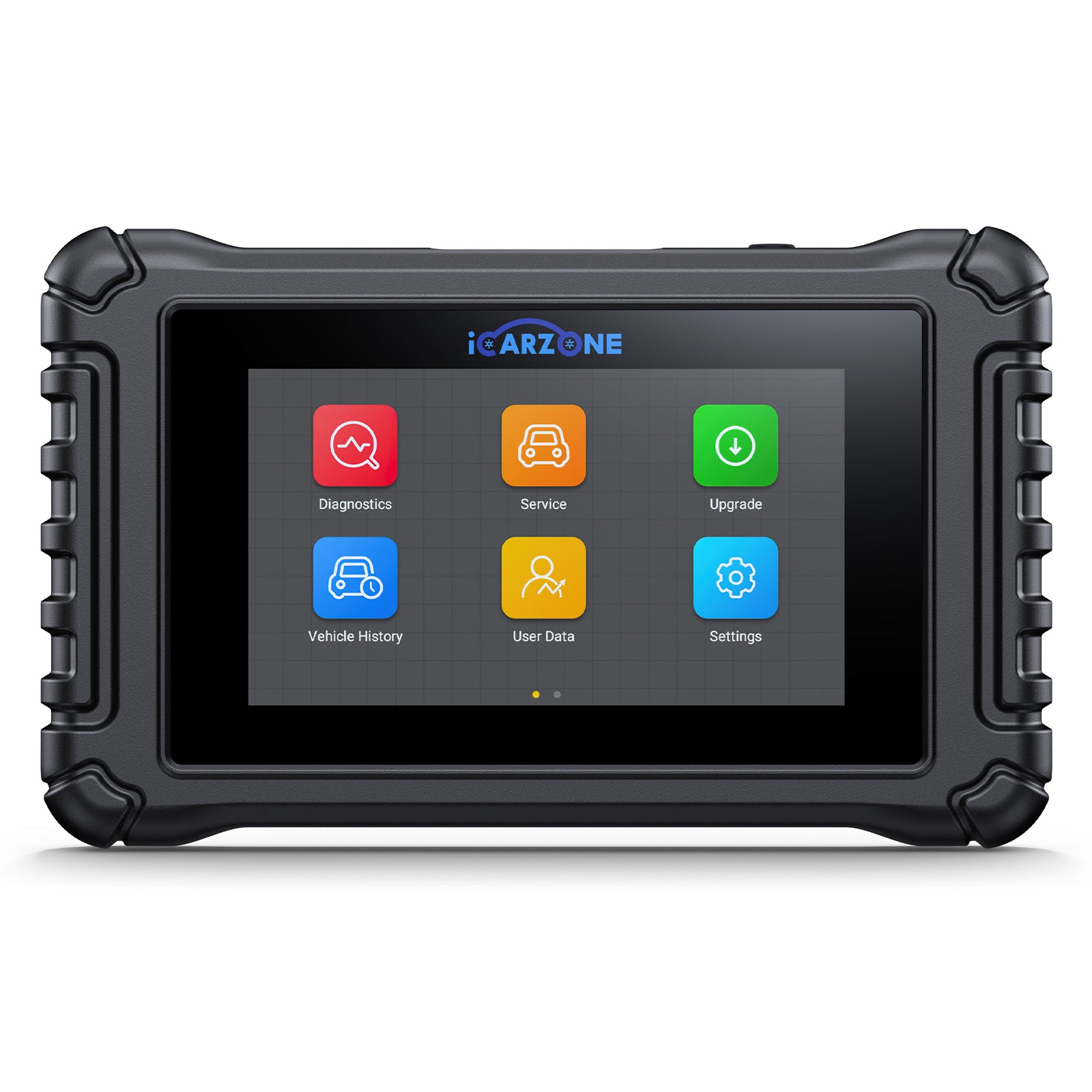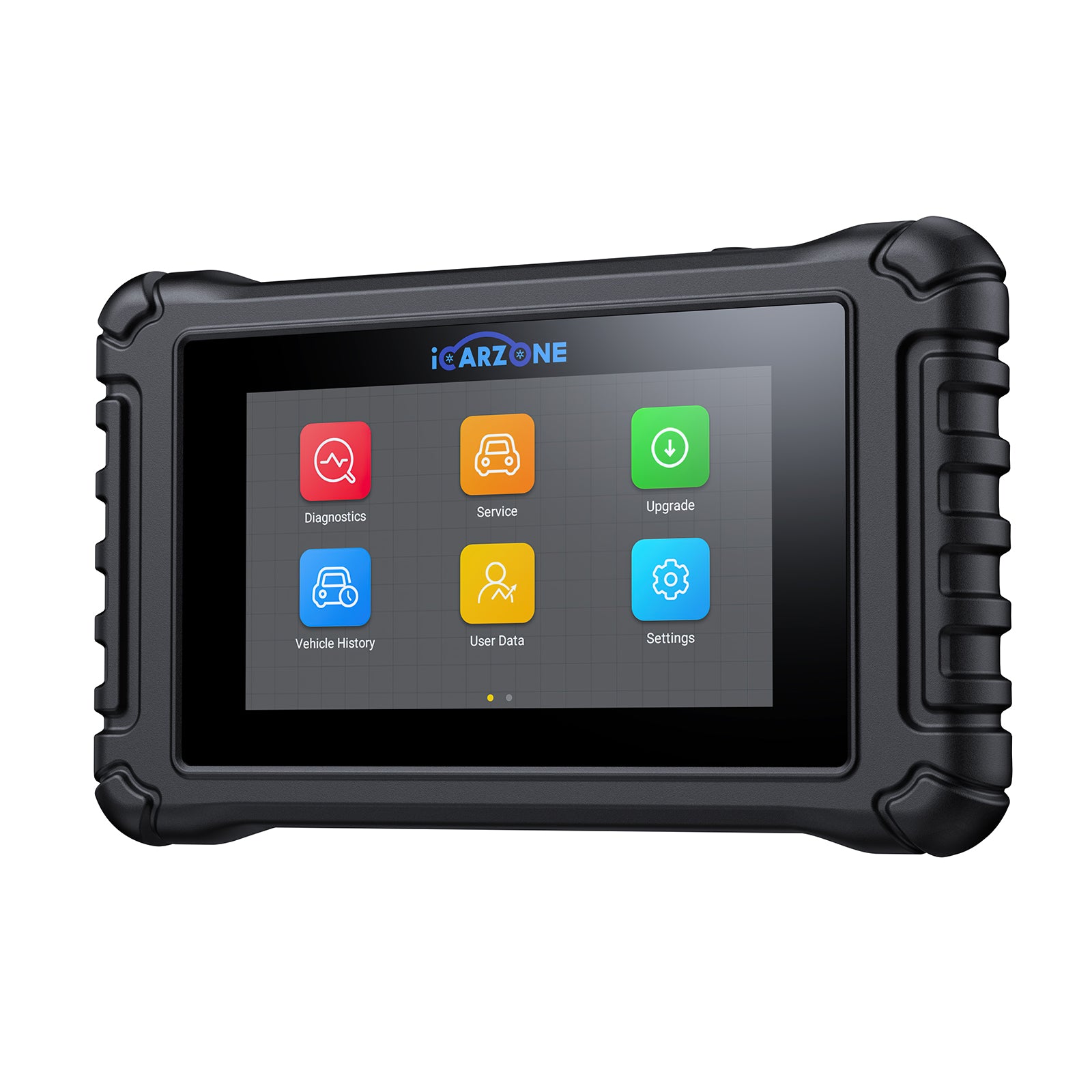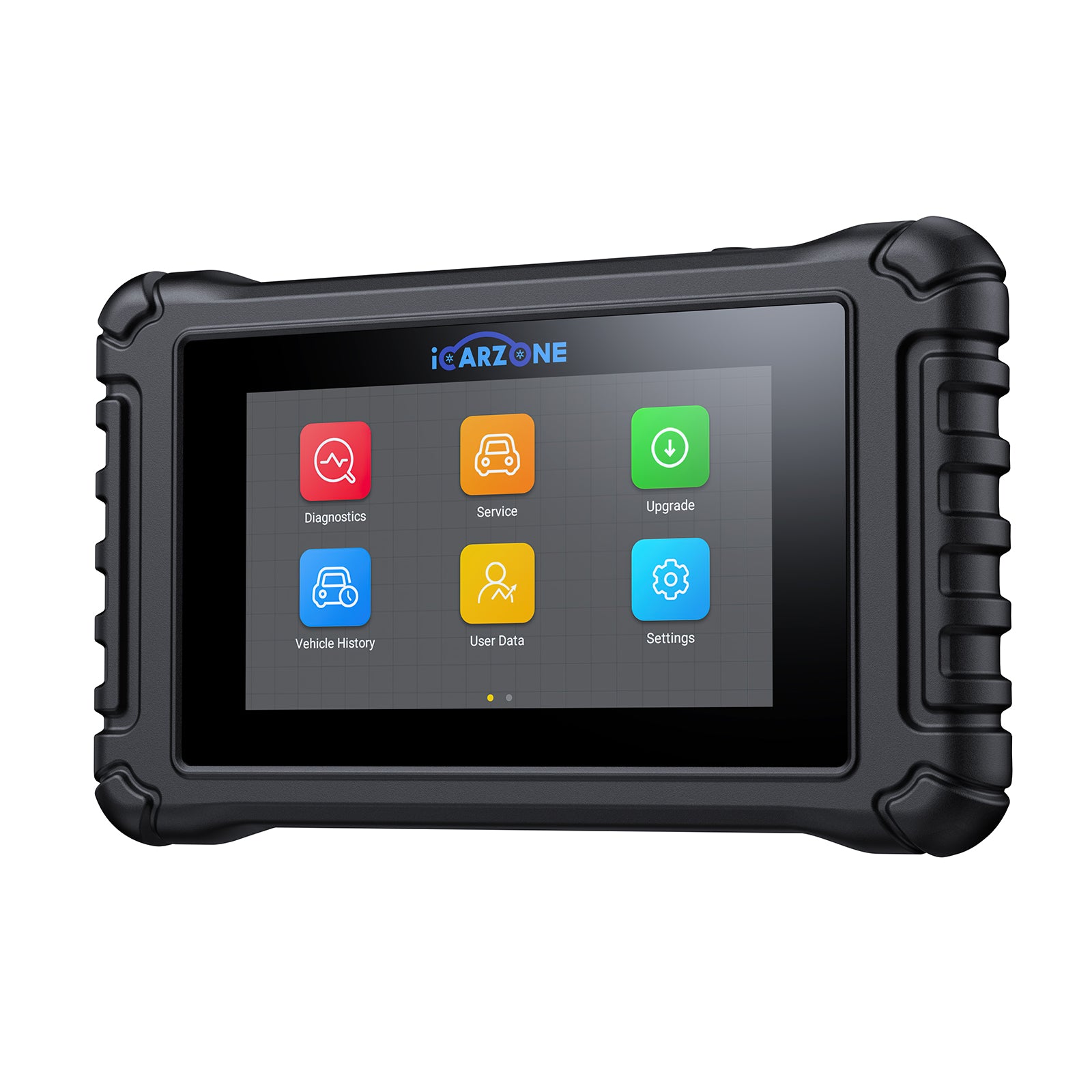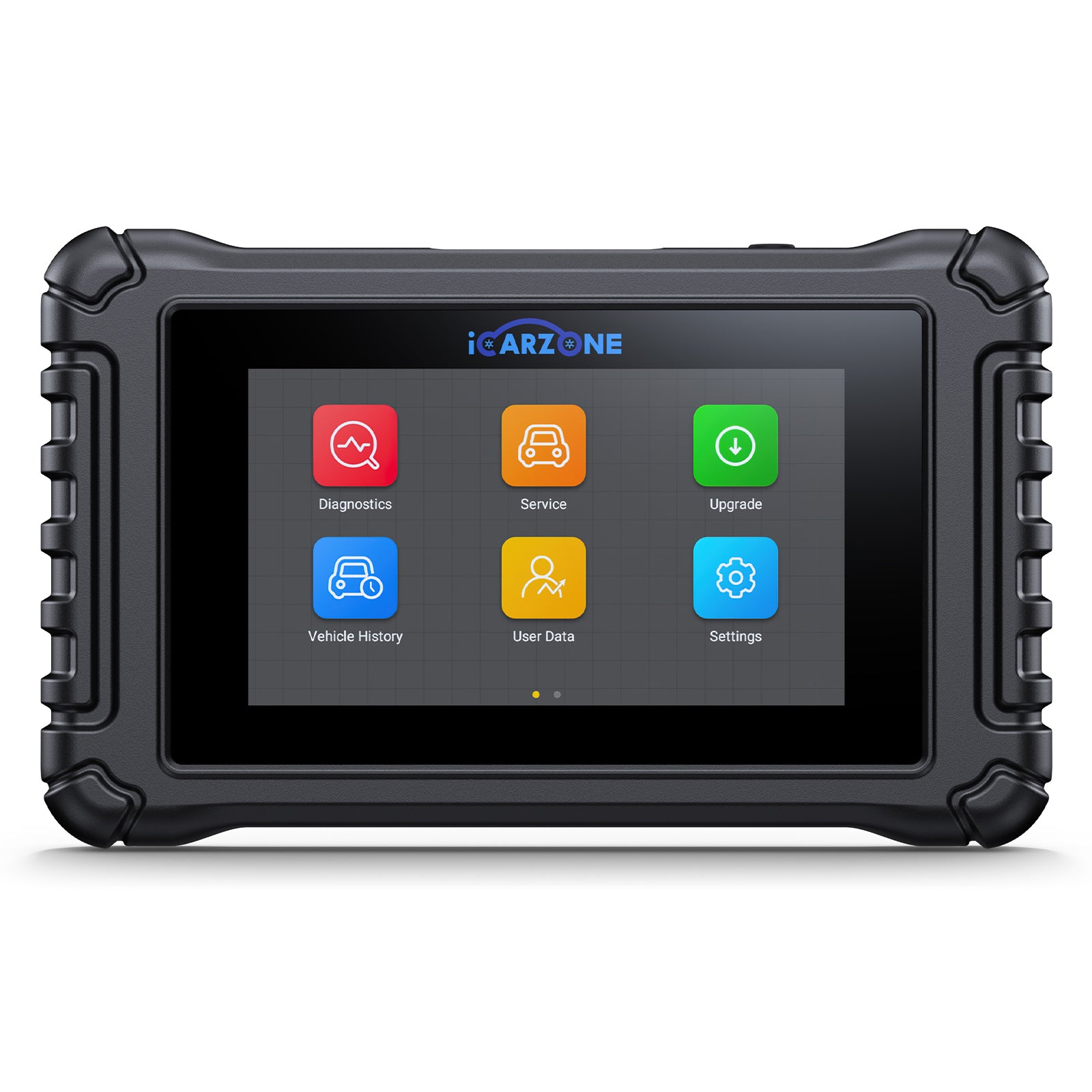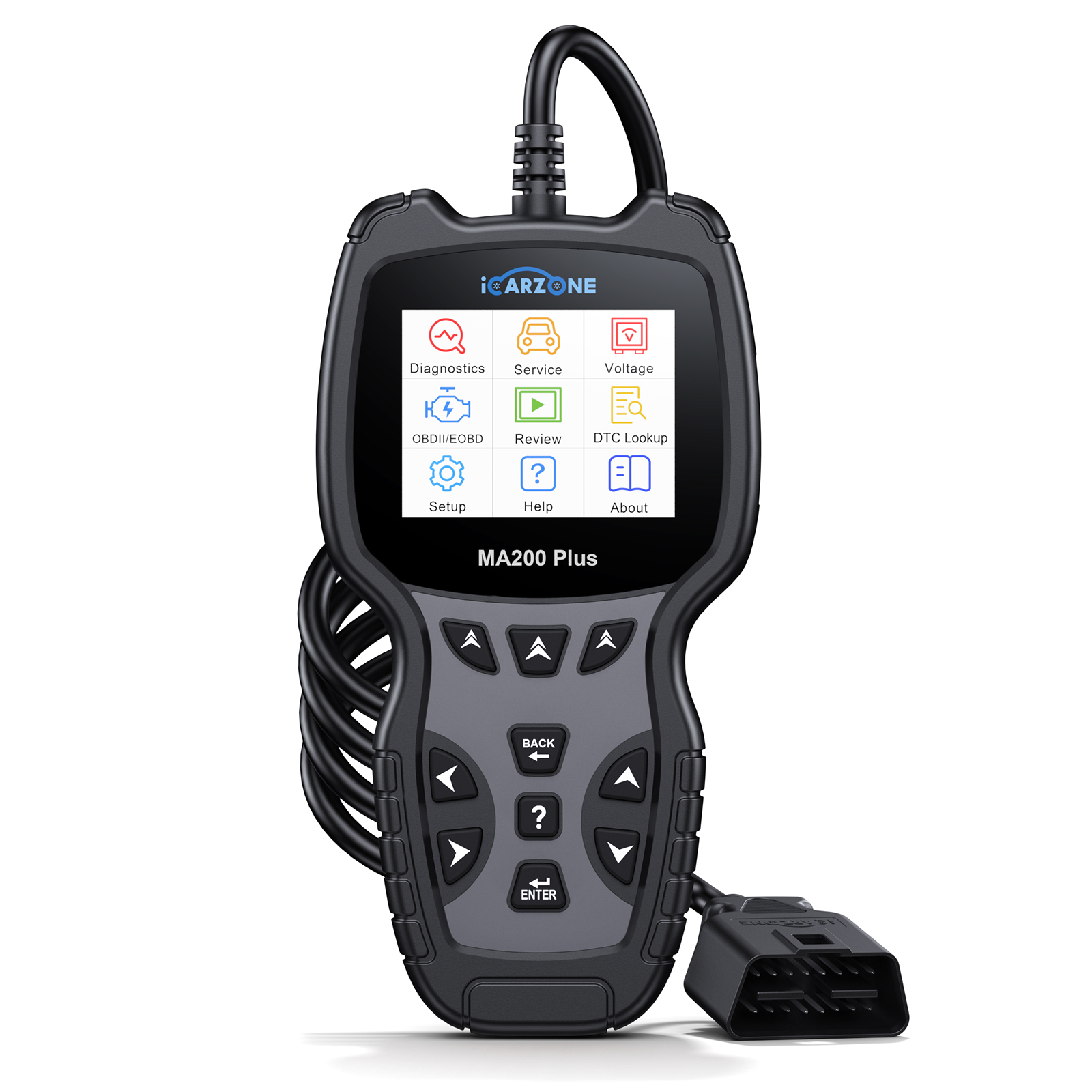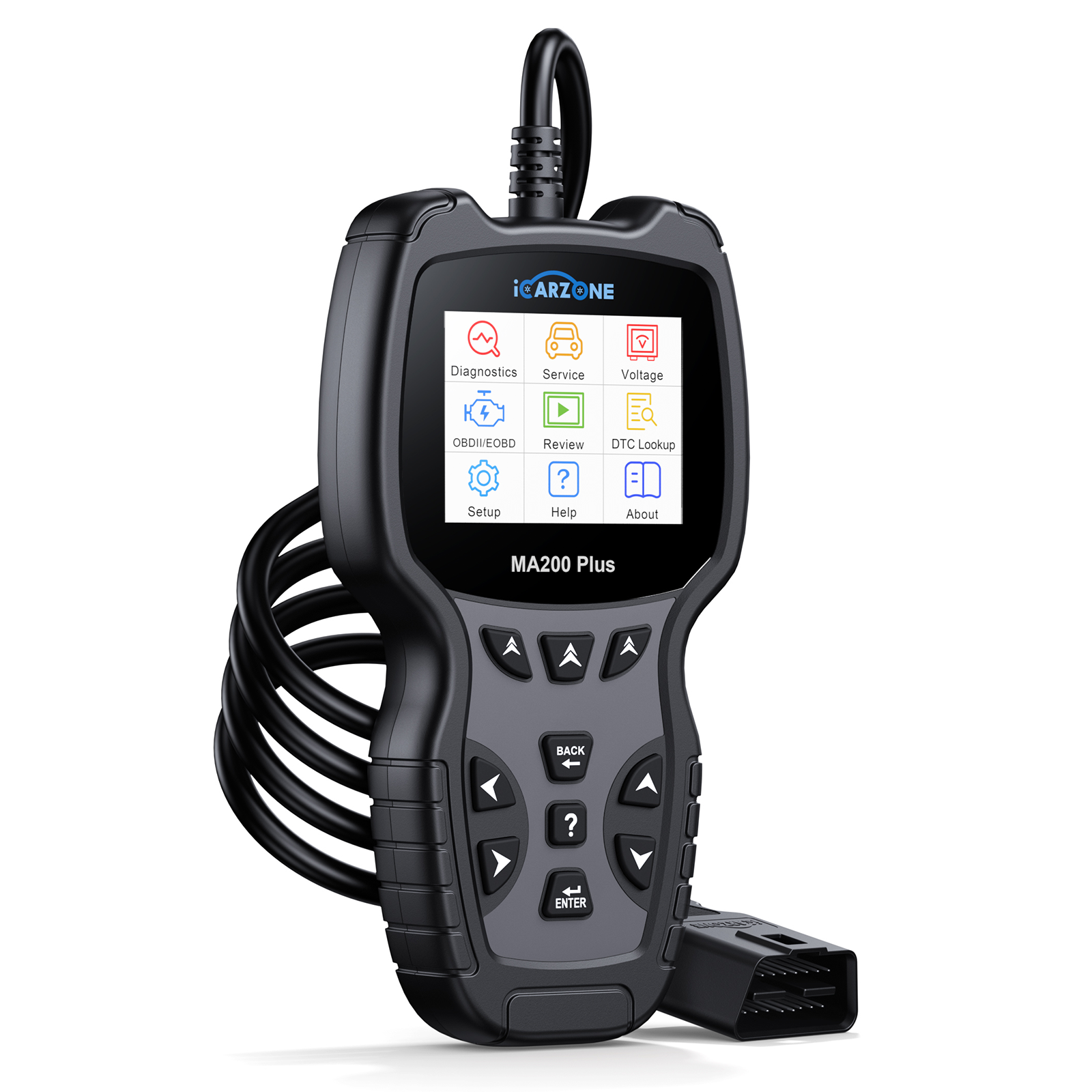P0098: Fix Fuel Pressure Issue in 2017-2020 F-150 | Fuel Regulator Repair with ICARZONE UR800
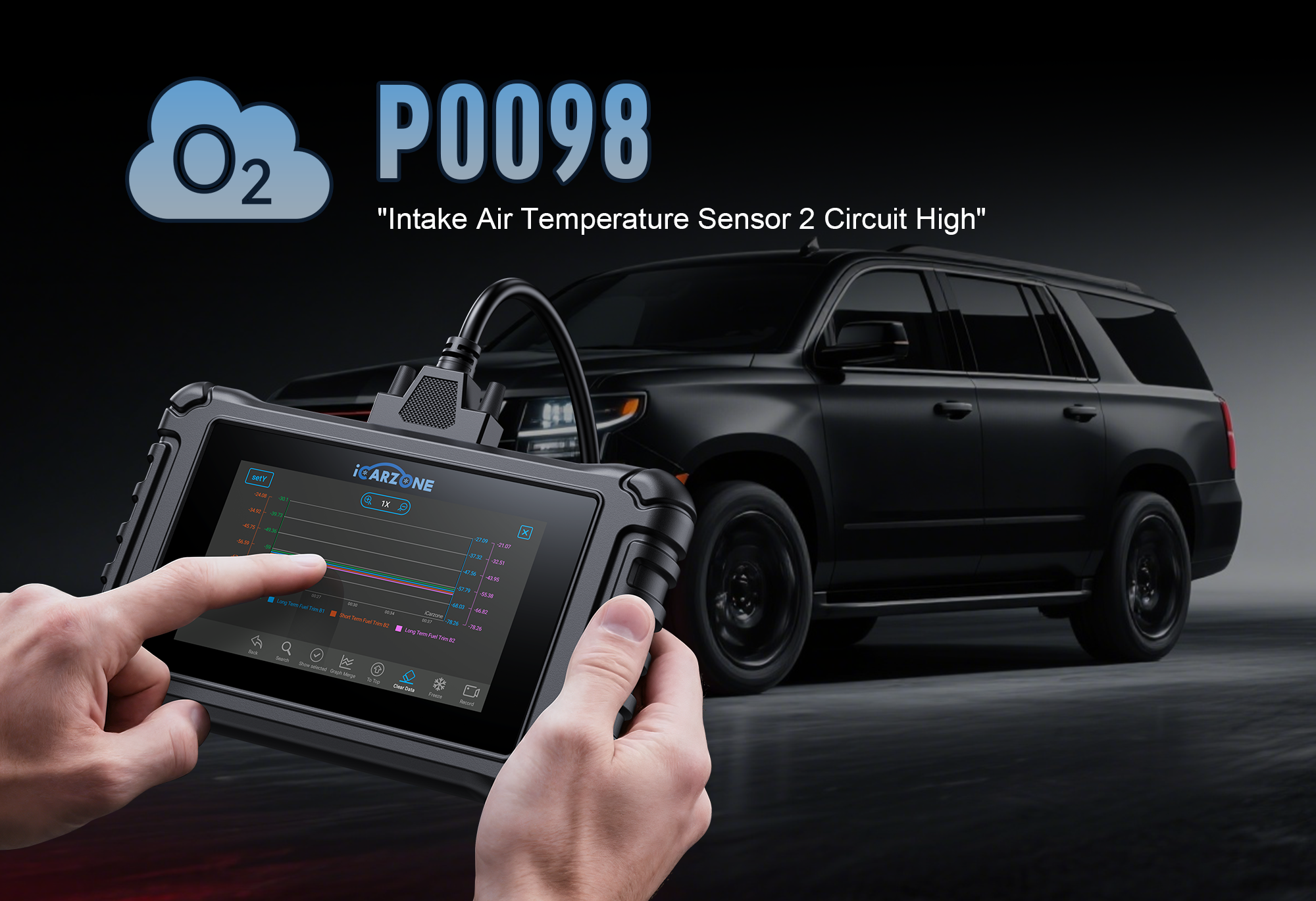
P0098: Fix Fuel Pressure Issue in 2017-2020 F-150
Diagnose and repair P0098 (Fuel Pressure Regulator Control Circuit High) in your EcoBoost F-150 with ICARZONE UR800—avoid dealer costs.
Fix F-150 P0098 with UR800Table of Contents
1. What is P0098 in Ford F-150 3.5L EcoBoost?
P0098 is an OBD-II diagnostic trouble code indicating “Fuel Pressure Regulator Control Circuit High”. For the 2017-2020 Ford F-150 equipped with the 3.5L EcoBoost V6, this code means the Powertrain Control Module (PCM) has detected an abnormally high voltage in the circuit controlling the high-pressure fuel regulator—a critical component in the EcoBoost’s dual-fuel system.
The 3.5L EcoBoost relies on a two-stage fuel system: a low-pressure pump (in the fuel tank) delivers fuel at 50-60 psi to a high-pressure pump (mounted on the engine), which boosts pressure to 2,000-2,500 psi for direct injection. The high-pressure regulator (Ford part #BL3Z-9C968-A) modulates this pressure based on engine demand—from idle to towing (up to 13,200 lbs in 2020 F-150s). P0098 triggers when the PCM detects voltage above 4.5V in the regulator’s control circuit, disrupting pressure modulation.
F-150 EcoBoost Specific: The 2017-2020 3.5L EcoBoost uses an updated regulator with a pulse-width modulated (PWM) control circuit. This circuit is prone to voltage spikes from heat soak—especially in F-150s used for towing in hot climates. Ford TSB 19-2241 addresses P0098 in 73% of affected trucks.

2. Top Causes of P0098 in 2017-2020 F-150 3.5L EcoBoost
Based on Ford service data and F-150 owner forums (F150Forum.com), these are the most common causes of P0098 in the 3.5L EcoBoost—ranked by frequency in real-world cases:
| Cause | Frequency in F-150 EcoBoost | Why It Triggers P0098 | Typical Mileage When It Occurs |
|---|---|---|---|
| Failed High-Pressure Fuel Regulator | 48% | Internal solenoid short causes voltage to spike above 4.5V; Ford #BL3Z-9C968-A fails due to heat cycling. | 60,000-85,000 miles |
| Damaged Regulator Wiring Harness | 27% | Heat from turbochargers degrades insulation; wires short against engine block (common in 4x4 models with off-road use). | 45,000-70,000 miles |
| Corroded PCM Connector | 12% | Water intrusion at PCM connector C2200 (located behind glove box) causes resistance in the control circuit. | 30,000-60,000 miles (more in humid climates) |
| Faulty High-Pressure Fuel Pump | 8% | Overpressurization from a failing pump forces regulator into constant high-voltage mode; Ford #BL3Z-9350-A pump affected. | 75,000-100,000 miles |
| PCM Software Glitch | 5% | Outdated calibration misinterprets voltage readings; resolved by Ford IDS update (TSB 19-2241). | Any mileage (sudden onset after cold weather) |
Real F-150 Owner Case: A 2018 F-150 Lariat 3.5L EcoBoost with 62,000 miles developed P0098 after towing a 9,000-lb trailer in 95°F weather. Using ICARZONE UR800’s Circuit Voltage Test, the owner measured 5.2V at the regulator connector (normal: 0.5-4.0V). Replacing the regulator with Ford #BL3Z-9C968-A and repairing 2 inches of damaged harness resolved the issue—costing $135 DIY vs. $480 at a Ford dealer.

3. Key Symptoms of P0098 in F-150 3.5L EcoBoost
P0098 symptoms in the 3.5L EcoBoost are most pronounced under load, as the fuel system struggles to maintain proper pressure for the twin turbos. Here’s how to identify the issue in your F-150:
Performance Symptoms
- Power loss under acceleration: Hesitates when passing or merging on highways.
- Reduced towing capacity: Struggles to maintain speed with trailers over 6,000 lbs.
- Turbo lag increase: Noticeable delay before boost builds (EcoBoost’s 375 HP/470 lb-ft not fully delivered).
- Poor fuel economy: Drop from 22-24 MPG (highway) to 18-20 MPG.
Mechanical & Warning Symptoms
- Check Engine Light (CEL): Illuminates solid (may flash during severe voltage spikes).
- Hard starting: Takes 2-3 cranks to start (especially when engine is warm).
- Fuel odor: Raw fuel smell from exhaust (unburned fuel due to pressure issues).
- Idling roughness: Engine shakes at stoplights (more noticeable in 4x4 models).
Critical Note: Ignoring P0098 can damage the EcoBoost’s direct injectors ($150 each) and turbos ($1,200+ per side). The regulator’s high voltage causes over-fueling, leading to carbon buildup and premature turbo wear—especially in F-150s used for frequent towing.
4. Diagnose P0098 in F-150 3.5L EcoBoost with ICARZONE UR800
Ford dealers charge $140-$190 to diagnose P0098, but the ICARZONE UR800 lets you pinpoint the cause in 20 minutes. Unlike generic scanners, it accesses the F-150’s EcoBoost-specific fuel system data and runs Ford-approved tests.
Step-by-Step Diagnosis with UR800
| Step | UR800 Function | What to Do (F-150 Specific) | How to Interpret Results |
|---|---|---|---|
| 1 | Full System Scan | Connect UR800 to F-150’s OBD-II port (under dashboard, driver’s side). Select “Ford” > “F-150” > “2017-2020” > “3.5L EcoBoost.” | Confirm P0098; check for related codes (P0087 = low pressure, P0093 = circuit low). |
| 2 | Live Data Stream | Select “EcoBoost Fuel Data” > Monitor critical parameters:
|
Normal: Voltage stays within range. Abnormal: Voltage >4.5V (failed regulator/wiring). |
| 3 | Circuit Voltage Test | Select “Active Tests” > “Fuel Regulator Circuit Test.” UR800 sends controlled signals to measure voltage response. | Pass: Voltage changes smoothly with test signals. Fail: Sudden spikes to >5V (short in regulator or harness). |
| 4 | Ford TSB Lookup | Enter F-150’s VIN > Select “Technical Service Bulletins.” | Check for TSB 19-2241: Applies to 2017-2019 F-150s; recommends PCM reflash and harness inspection. |
| 5 | Pressure Leakdown Test | Select “EcoBoost Specific Tests” > “High-Pressure Leakdown.” UR800 monitors pressure retention after shutdown. | Pass: Pressure drops <100 psi in 5 minutes. Fail: Drop >300 psi (failing pump or regulator). |

5. Step-by-Step P0098 Repairs for F-150 3.5L EcoBoost
Once UR800 identifies the cause, these F-150-specific repairs will resolve P0098. Always use Ford OEM parts for the 3.5L EcoBoost—aftermarket regulators fail 3x faster under high pressure:
Repair 1: Replace High-Pressure Fuel Regulator (Most Common Fix)
- Ensure engine is cold (allow 4+ hours after running) – high-pressure fuel system retains pressure.
- Relieve fuel pressure: Remove fuel pump fuse (fuse #9 in underhood fuse box) and start engine until it stalls.
- Disconnect the negative battery terminal (10mm wrench).
- Remove engine cover (4 8mm bolts) to access the fuel rail.
- Locate the high-pressure regulator: Mounted on the driver’s side fuel rail, near the front turbocharger.
- Disconnect the regulator’s electrical connector (press tab and pull straight back).
- Use a 19mm wrench to loosen the regulator’s fuel line fitting (have rags ready to catch fuel residue).
- Remove the 2 Torx T30 bolts securing the regulator to the fuel rail.
- Carefully remove the old regulator – note the position of the O-ring seal.
- Install new Ford OEM regulator (#BL3Z-9C968-A) with fresh O-ring (included in kit).
- Torque fuel line fitting to 20 ft-lbs and mounting bolts to 8 ft-lbs.
- Reconnect electrical connector, battery terminal, and fuel pump fuse.
- Use UR800 to run “Fuel System Pressure Calibration” (15-minute process critical for EcoBoost).
Repair 2: Repair Damaged Wiring Harness
- Disconnect battery terminal and locate regulator harness: Runs from PCM to driver’s side fuel rail.
- Inspect harness for damage – focus on areas near turbochargers (heat damage) and engine mounts (abrasion).
- For minor damage (exposed wires): Cut damaged section, strip 1/4” of insulation, and splice with heat-shrink connectors (Ford #WPT-1064).
- For severe damage: Replace affected harness section with Ford #BL3Z-12B637-AA (regulator pigtail).
- Wrap repaired section with high-temperature loom (resistant to 250°F+) to prevent reoccurrence.
- Reconnect battery and use UR800’s “Circuit Continuity Test” to verify repair.
Repair 3: PCM Software Update
- Connect UR800 to OBD-II port and turn ignition to “On” (engine off).
- Select “Ford” > “F-150” > “ECU Updates” > “Check for Calibrations.”
- UR800 will detect if TSB 19-2241 update is needed (addresses P0098 false triggers).
- Follow on-screen prompts to install update (takes 20-30 minutes – do not turn off ignition).
- After update, use UR800 to clear codes and run “System Verification.”
6. P0098 Repair Costs: DIY vs. Ford Dealer (F-150 3.5L EcoBoost)
Repair costs for P0098 in the F-150 3.5L EcoBoost vary based on the cause, but DIY repairs offer significant savings over Ford dealer service:
| Repair Type | DIY Cost (Parts + Tools) | Ford Dealer Cost (Parts + Labor) | DIY Time Required |
|---|---|---|---|
| High-Pressure Fuel Regulator Replacement | $120-$160 (Ford #BL3Z-9C968-A: $100; O-ring kit: $15) | $450-$580 (labor: $130/hour x 2.5 hours) | 1.5-2 hours |
| Wiring Harness Repair | $30-$60 (pigtail: $40; heat-shrink connectors: $15) | $320-$450 (labor: $130/hour x 2 hours) | 1-1.5 hours |
| PCM Software Update | $0 (with ICARZONE UR800) | $180-$220 (dealer computer time) | 30 minutes |
| High-Pressure Fuel Pump Replacement | $350-$450 (Ford #BL3Z-9350-A: $320) | $1,100-$1,400 (labor: $130/hour x 5 hours) | 3-4 hours (advanced DIY) |
| PCM Connector Cleaning/Replacement | $15-$30 (contact cleaner: $8; dielectric grease: $7) | $250-$350 (labor: $130/hour x 1.5 hours) | 45-60 minutes |
| Diagnosis Only | $0 (with ICARZONE UR800) | $140-$190 | 20 minutes |
Cost Savings Example: Replacing the fuel regulator DIY costs $120-$160, saving $330-$420 vs. dealer service. The UR800 pays for itself in one repair and prevents unnecessary part replacements.
7. Prevent P0098 in Your F-150 3.5L EcoBoost
The 3.5L EcoBoost’s high-pressure fuel system is robust, but these proactive steps will help you avoid P0098—critical for F-150 owners who rely on their trucks for work or towing:
- Use Top-Tier Diesel Fuel (For Flex-Fuel Models): If your F-150 is flex-fuel capable, use 87-octane gasoline from Top-Tier retailers (Shell, Chevron). Poor-quality fuel accelerates regulator wear.
- Change Fuel Filter Every 30,000 Miles: The in-tank filter (Ford #BL3Z-9155-A) traps contaminants that damage the regulator. Towing trucks should change it every 25,000 miles.
- Inspect Regulator Harness Quarterly: Check for heat damage near turbos and abrasion at engine contact points. Apply dielectric grease to the connector to prevent corrosion.
- Avoid Running Low on Fuel: Keeping the tank above 1/4 full prevents the low-pressure pump from overworking, which can cause pressure spikes in the high-pressure system.
- Update PCM Software Proactively: Use UR800 to check for Ford updates annually—TSB 19-2241 and newer calibrations reduce false P0098 triggers in cold weather.
- Let Engine Cool Before Shutdown (After Towing): Idle for 2-3 minutes after heavy towing to reduce heat soak on the regulator and turbo components.
- Run UR800 Fuel System Tests: Use the UR800’s “EcoBoost Fuel Health Check” every 15,000 miles to monitor regulator voltage and pressure trends.
8. F-150 3.5L EcoBoost P0098 FAQs
Can I drive my F-150 with P0098?
Short distances (under 50 miles) are possible, but avoid towing or heavy loads. Prolonged driving can damage injectors and turbos—costing $2,000+ to repair.
Will aftermarket regulators work in my EcoBoost F-150?
Not recommended. Aftermarket regulators can’t handle the 3.5L EcoBoost’s 2,500 psi pressure—70% fail within 10,000 miles. Always use Ford #BL3Z-9C968-A.
Why is P0098 more common in 2017-2019 F-150s?
These model years used a revised regulator with a thinner wiring harness insulation. Ford updated the harness in 2020 models (part #BL3Z-12B637-AA) to resist heat better.
Does Ford’s warranty cover P0098 repairs?
New F-150s have a 3-year/36,000-mile basic warranty and 5-year/60,000-mile powertrain warranty. Regulator and harness issues are covered if within these limits. TSB updates are free.
Can extreme cold weather trigger P0098?
Yes. Freezing temperatures can cause voltage fluctuations in the regulator circuit. Ford’s TSB 19-2241 update (available via UR800) resolves this in 90% of cases.
How does towing affect P0098 risk?
Towing increases fuel pressure demand, causing the regulator to work harder. F-150s used for frequent towing (weekly) are 2.5x more likely to develop P0098—regular maintenance is critical.
Fix P0098 in Your F-150 3.5L EcoBoost Today
The ICARZONE UR800 is the only scanner built for F-150 owners. It diagnoses P0098 in 20 minutes, includes EcoBoost-specific tests, and saves you $250+ on dealer diagnostics and repairs.
Buy ICARZONE UR800 NowSummary: P0098 in F-150 3.5L EcoBoost
P0098 (Fuel Pressure Regulator Control Circuit High) is a common issue in 2017-2020 Ford F-150 3.5L EcoBoost models, primarily caused by failed regulators (48% of cases), damaged wiring (27%), or PCM issues (17%). Symptoms include power loss, reduced towing capacity, and poor fuel economy—worse under load.
The ICARZONE UR800 simplifies diagnosis with F-150-specific tools: live voltage monitoring, circuit tests, and TSB lookup. Most cases are fixed by replacing the regulator ($120-$160 DIY) or repairing wiring ($30-$60 DIY)—saving $330-$420 vs. dealer service.
Prevent P0098 by using Top-Tier fuel, changing the fuel filter every 30,000 miles, and inspecting the regulator harness quarterly. With the UR800, you can keep your F-150’s EcoBoost engine performing at its best for towing and daily use.


